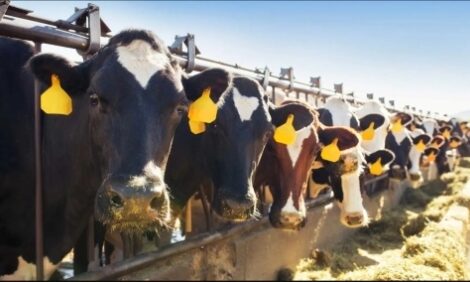



Ireland Plans to Have Europe's Fastest Growing Dairy Industry
IRELAND - Irish Minister for Agriculture Simon Coveney has big plans for the dairy sector in Ireland. In a recent conversation, Coveney said that Ireland strives to have the fastest growing dairy sector in Europe in the coming years.In fact, he expects that the country could achieve up to 50 percent growth in a five-year period, writes Melanie Epp for TheCattleSite.
“In the first year alone, we’ll probably achieve maybe 15 percent growth,” he said. “And that is because many dairy farms in Ireland were deliberately under milking their herds in recent because of the restrictions around quota and super levy fines that come with producing milk over quota.”
Although Ireland was able to survive quota, now that it is out of the way Coveney said dairy farmers are excited about the future. “Because we have been operating in the same supply straightjacket that every other country has had to operate in since 1984, we’ve had to find a way of adding value to our dairy industry,” he explained. “We have moved from being an exporter of safe, commodity products – powders, cheeses and butter – to moving into the space of being a premium provider.”
Expansion, said Coveney, will happen on the back of reputation. That reputation, he continued, is based on quality, safety, innovation and sustainability. But it’s not just reputation that will push Ireland forward. Irish dairy farmers have one natural competitive advantage and they’re willing to milk it for all it’s worth: grass.
“We grow grass more efficiently, I believe, than any other country in the world,” said Coveney. “And we want to build a food industry on the back of that.”
The Irish Dairy Landscape
Ireland’s some 17,500 dairy farmers consider themselves lucky, said Jim Woulfe, CEO of Dairyland, the country’s second largest dairy processor. Not only do they have access to hectares of grass, the land is also available 300 days of the year.
Ireland's dairy industry is predominantly one of spring calving, says Woulfe, and it is very much pasture based. Herd size is about 70 cows per farm, and average farm size is approximately 47 hectares. Some 48 percent of Irish dairy farmers are under 50 years of age, which means more than half of them are over 50. Last year, farmers grossed €68,877 on average.
Each year, Ireland trades 4.9-billion liters of milk globally. Per cow, milk yield is approximately 4,740 litres, although that number has been suppressed by quota, says Woulfe. While there are about 1.2 million dairy cows in Ireland today, the goal is to increase that number to 1.4 million by 2020.
Increased milk production will not just be the result of increased herd sizes, said Woulfe. As much as 20 percent of that growth will come from improved cow performance, he said.
Challenge and Change
Ireland expects to see major changes and some challenge in the coming years. Challenge will come in the form of declining milk prices, while the sector expects to see generational changes and more sustainable growth.
Although milk prices are declining, Coveney is not worried. “We think that grass can be a protector from the vagaries of price volatility of agricultural products, particularly feed stuffs and grain,” he said.
Two and a half years of cheap grain and increased dairy output have driven down prices, he said, but that can’t last forever. “Even in a year when prices are weakening, the Irish production system based on grass is competitive,” he said. “It will become even more competitive when grain gets back to a normal pricing.”
Sustainable growth is key for the industry’s success, which is why Coveney, although with Board Bia, the Irish Food Board, helped to introduce the Dairy Sustainability Assurance Scheme. The goal of the scheme is to demonstrate to customers that milk products can and will be produced sustainably, to provide a uniform mechanism for recording and monitoring, and to set out criteria for best management practices in the industry. Currently the scheme is voluntary, but Bord Bia expects that it will be mandatory in the near future. Coveney said that all dairy farmers should be signed up for the scheme by the end of next year.
The final and perhaps biggest challenge to Ireland is its aging dairy sector. Approximately 52 percent of the country’s dairy farmers are over the age of 50
“Only 6 percent of farmers in Ireland that own their own farms are under the age of 35,” said Coveney. “That is not a basis for the kind of innovation that we want in agriculture.”
To help younger farmers succeed, the Minister has now decided to positively discriminate in favour of a younger generation of farmer. “It is now mandatory for countries to give top-up payments in terms of support payments for farming to young farmers under the age of 40,” he said. “And that is the way it should.”
The policy has already resulted in a generational shift in Ireland’s agricultural sector.

Melanie Epp
Freelance journalist
Melanie Epp is a freelance agricultural journalist from Canada, although she currently resides in Belgium. She writes about livestock, horticultural and crop production for a variety of publications around the globe. Website: www.melanierepp.com


